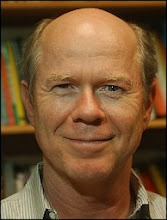Chronic pain and TMS
A few years ago I read John Sarno, MD’s book Healing Back Pain, and was impressed with the concept that most chronic pain and many chronic conditions result from unconscious and unresolved emotions. Medical journals consistently estimate 70-80% of all doctor visits are due to stress and not to a “true medical condition”. I have seen many clients in my practice who have painful conditions that have not resolved with medical treatment.
In his several books, including the latest, The Mindbody Prescription, Dr. Sarno explains the cause of pain as being Tension Myositis Syndrome (TMS). TMS is a harmless and yet painful condition that occurs in muscles, tendons or nerves where capillaries (tiny blood vessels) constrict, causing restricted blood flow. Restricted blood flow causes mild oxygen deprivation and this results in pain. Although the physical symptoms of TMS may occur as numbness, tingling, weakness or burning, it's always harmless in spite of how intensely painful it can be.The cause of TMS is not physical, but rather psychological. To fully understand this diagnosis, one must acknowledge the existence of the unconscious mind and accept the powerful influence it holds over our lives. TMS pain stems from unresolved emotions of sadness and rage that start to become conscious and present a threat. Our brains then create the pain to distract the conscious mind from the unconscious negative emotions.
When clients have already seen many doctors without relief, I recommend they see David Schechter, MD, in Los Angeles, a physician trained by Dr. Sarno (who is in New York) for an opinion on whether TMS is the actual condition. If it is, the process of healing can begin, and my role is to assist in accepting the diagnosis. I have videos and methods to help clients reduce their pain and start getting on with their lives. These methods may include alpha-theta neurofeedback training, Open Focus training, HRV training, or the Alpha-Stim SCS.

